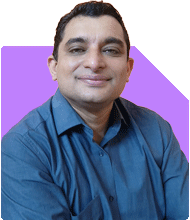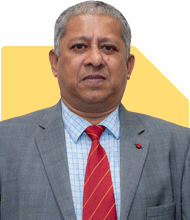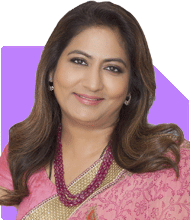Ramalingam Kalirajan |8291 Answers |Ask -Follow
Mutual Funds, Financial Planning Expert - Answered on Jun 21, 2024
He has an MBA in finance from the University of Madras and is a certified financial planner.
He is the director and chief financial planner at Holistic Investment, a Chennai-based firm that offers financial planning and wealth management advice.... more

Hi I am 33 years female earning 45k per month present my husband is jobless n I have a baby of 6 months I want to plan my baby’s future best for her studies n to earn some property n gold for her how to spend for house needs and how can I save or invest money for future please guide me if possible. Thank you
Understanding Your Income and Expenses
First, let's look at your monthly income and expenses. With a monthly salary of Rs 45,000, you need to ensure all essential needs are met while setting aside funds for future goals. Here's a basic breakdown:
Monthly Income:
Salary: Rs 45,000
Monthly Expenses:
Household Needs: Rs 20,000
Savings and Investments: Rs 10,000
Miscellaneous: Rs 5,000
This leaves you with Rs 10,000 that you can allocate towards your future goals.
Budgeting for Household Needs
Budgeting is crucial to ensure you do not overspend. Here's a suggested budget breakdown for your household:
Housing and Utilities:
Rent/Mortgage: Rs 10,000
Electricity, Water, Gas: Rs 2,000
Groceries and Essentials:
Food: Rs 5,000
Cleaning Supplies: Rs 1,000
Baby's Needs:
Diapers and Baby Food: Rs 2,000
Transport and Miscellaneous:
Transport: Rs 3,000
Miscellaneous: Rs 2,000
Stick to this budget to ensure you can save for your child's future.
Setting Up an Emergency Fund
Before we discuss investments, it's essential to have an emergency fund. This fund should cover 6-12 months of expenses. For you, it should be around Rs 1.5 lakh to Rs 3 lakh. Start by saving a small amount each month until you reach this target.
Benefits of an Emergency Fund:
Provides financial security.
Helps manage unexpected expenses.
Prevents the need to liquidate investments.
Investing for Your Child’s Education
Education is a significant expense. Start saving early to benefit from compounding. Here are some options:
Systematic Investment Plans (SIPs):
SIPs are a great way to invest small amounts regularly.
Choose diversified equity mutual funds for long-term growth.
Aim to invest Rs 5,000 monthly.
Public Provident Fund (PPF):
PPF is a safe, long-term investment.
Offers tax benefits under Section 80C.
Invest Rs 2,000 monthly to build a corpus.
Building a Corpus for Property and Gold
Investing in property and gold can secure your child’s future. Here's how to approach it:
Gold Investment:
Invest in gold ETFs or sovereign gold bonds.
Avoid physical gold due to storage and security issues.
Allocate Rs 1,000 monthly to gold investments.
Long-Term Wealth Creation
Apart from saving for your child's education, focus on creating long-term wealth. Here's a structured approach:
Diversified Equity Mutual Funds:
Invest in actively managed equity funds.
These funds can provide higher returns than index funds.
Invest Rs 2,000 monthly in diversified equity funds.
Avoid Direct Funds:
Direct funds require thorough research and constant monitoring.
Instead, invest through a Certified Financial Planner.
This ensures professional management and better returns.
Insurance Planning
Having adequate insurance is essential to protect your family. Consider the following:
Health Insurance:
Ensure you have a comprehensive health insurance policy.
It should cover you, your husband, and your baby.
Term Life Insurance:
A term plan provides financial security in case of any unfortunate event.
Ensure you have a term insurance policy with adequate coverage.
Creating a Balanced Investment Portfolio
A balanced portfolio minimizes risk and maximizes returns. Here's a suggested allocation:
Equity:
Diversified equity funds: 50%
SIPs: 20%
Debt:
PPF: 20%
Fixed Deposits: 10%
Gold:
Gold ETFs or sovereign gold bonds: 10%
Review and rebalance your portfolio annually with the help of a Certified Financial Planner.
Regular Monitoring and Adjustments
Financial planning is not a one-time activity. Regularly monitor your investments and make adjustments as needed. Here are some tips:
Annual Review:
Review your financial goals and progress annually.
Adjust your investments based on performance and market conditions.
Consult a Certified Financial Planner:
A CFP can provide professional advice and help you stay on track.
They can also assist in rebalancing your portfolio.
Managing Debt
Avoid taking unnecessary loans. If you have existing debt, prioritize paying it off. Here’s how:
Debt Repayment Strategy:
List all debts and their interest rates.
Pay off high-interest debts first.
Use any surplus funds to clear debts faster.
Setting Up a Retirement Fund
While planning for your child’s future, don’t neglect your retirement. Start investing early for a secure retirement:
Employees’ Provident Fund (EPF):
Ensure you contribute to EPF.
It offers tax benefits and long-term savings.
National Pension System (NPS):
NPS is a good option for retirement planning.
It offers tax benefits under Section 80CCD.
Tax Planning
Efficient tax planning can save money. Invest in tax-saving instruments and claim deductions:
Section 80C:
Invest in PPF, ELSS, or NSC to claim deductions up to Rs 1.5 lakh.
Section 80D:
Claim deductions for health insurance premiums.
Teaching Financial Literacy
Teaching your child financial literacy is crucial. Start early to build good habits:
Simple Saving:
Teach your child the importance of saving money.
Use a piggy bank to make it fun.
Basic Investing:
Introduce the concept of investing in simple terms.
Explain how money can grow over time.
Final Insights
Financial planning is a journey. It requires discipline, regular monitoring, and adjustments. With proper planning, you can secure your child’s future and achieve your financial goals. Remember to stay focused, be patient, and seek professional advice when needed. You are already taking a great step by planning for the future, and with consistent efforts, you will succeed.
Best Regards,
K. Ramalingam, MBA, CFP,
Chief Financial Planner,
www.holisticinvestment.in
You may like to see similar questions and answers below
Ramalingam Kalirajan |8291 Answers |Ask -Follow
Mutual Funds, Financial Planning Expert - Answered on Apr 15, 2024
Ramalingam Kalirajan |8291 Answers |Ask -Follow
Mutual Funds, Financial Planning Expert - Answered on Jul 03, 2024
Ramalingam Kalirajan |8291 Answers |Ask -Follow
Mutual Funds, Financial Planning Expert - Answered on Jul 25, 2024
Dr Shakeeb Ahmed Khan |154 Answers |Ask -Follow
Physiotherapist - Answered on Apr 26, 2025
Mayank Chandel |2239 Answers |Ask -Follow
IIT-JEE, NEET-UG, SAT, CLAT, CA, CS Exam Expert - Answered on Apr 26, 2025
Mayank Chandel |2239 Answers |Ask -Follow
IIT-JEE, NEET-UG, SAT, CLAT, CA, CS Exam Expert - Answered on Apr 26, 2025
Prof Suvasish Mukhopadhyay |593 Answers |Ask -Follow
Career Counsellor - Answered on Apr 26, 2025
Prof Suvasish Mukhopadhyay |593 Answers |Ask -Follow
Career Counsellor - Answered on Apr 26, 2025
Prof Suvasish Mukhopadhyay |593 Answers |Ask -Follow
Career Counsellor - Answered on Apr 26, 2025
Mayank Chandel |2239 Answers |Ask -Follow
IIT-JEE, NEET-UG, SAT, CLAT, CA, CS Exam Expert - Answered on Apr 26, 2025
T S Khurana |454 Answers |Ask -Follow
Tax Expert - Answered on Apr 26, 2025
T S Khurana |454 Answers |Ask -Follow
Tax Expert - Answered on Apr 26, 2025
Dr Nandita Palshetkar |71 Answers |Ask -Follow
Gynaecologist, IVF expert - Answered on Apr 26, 2025
























